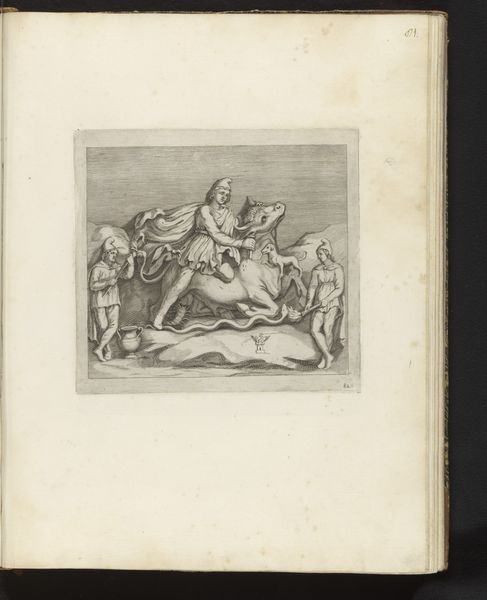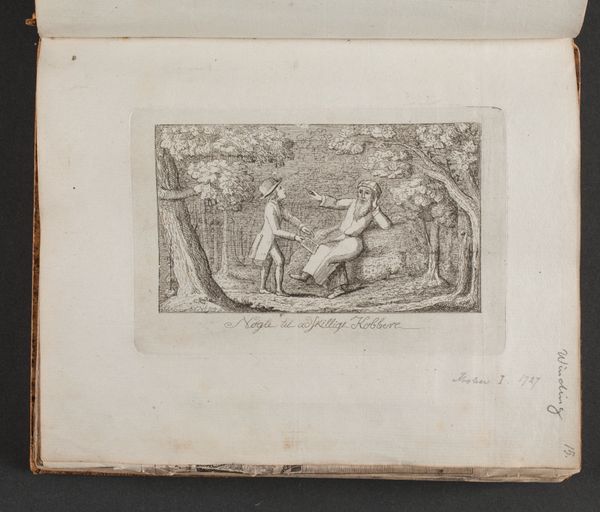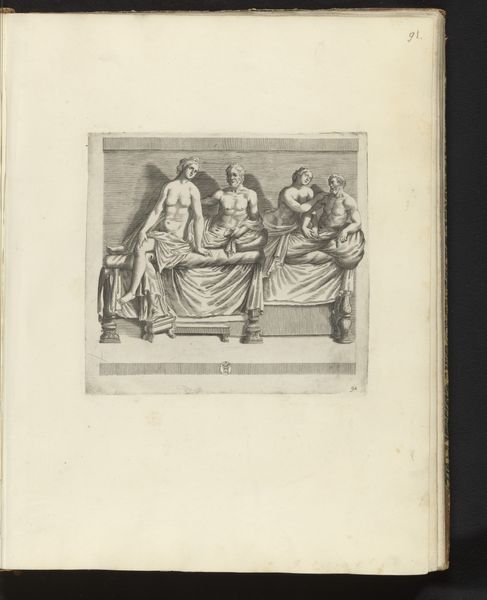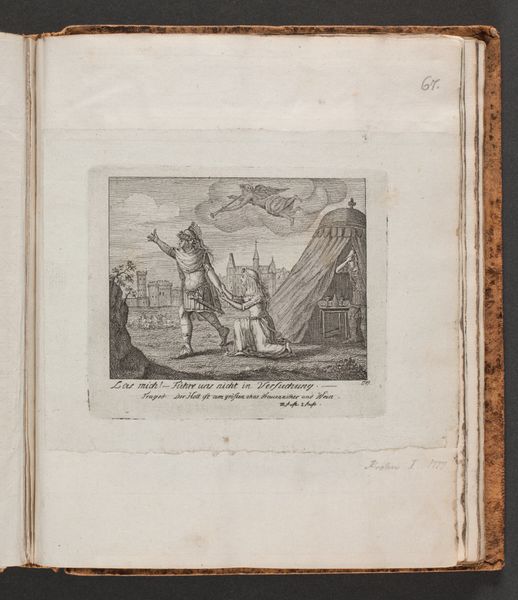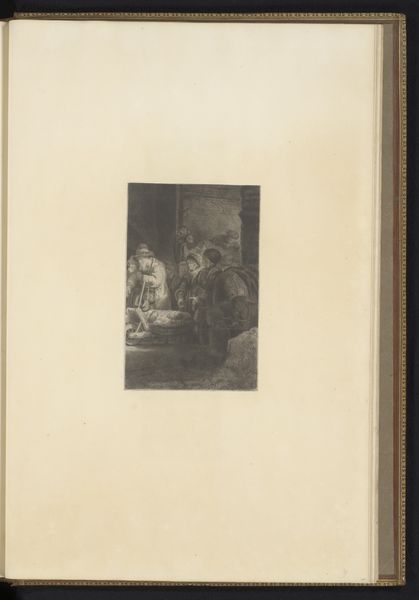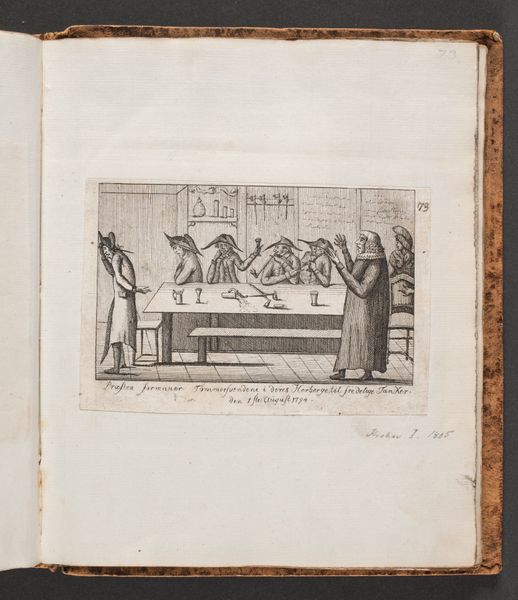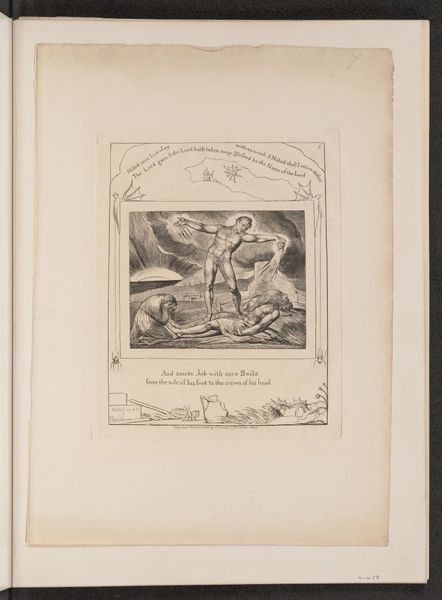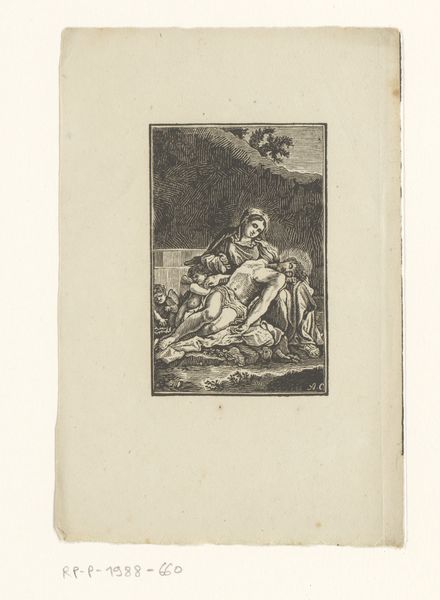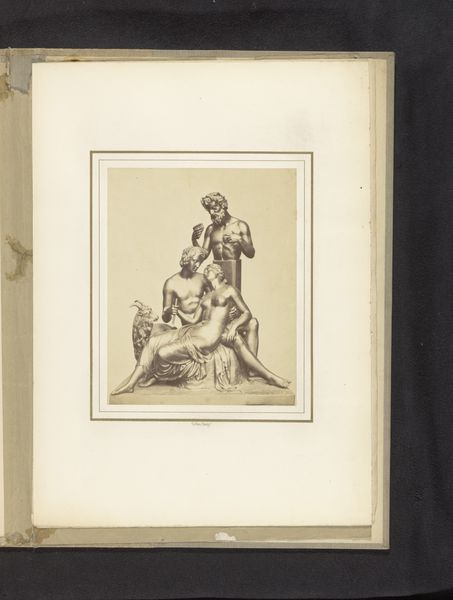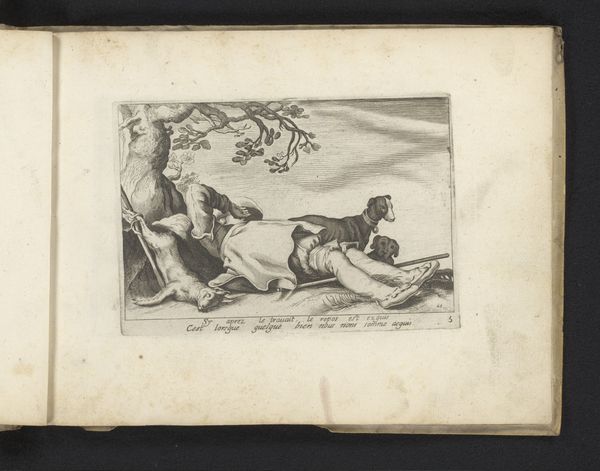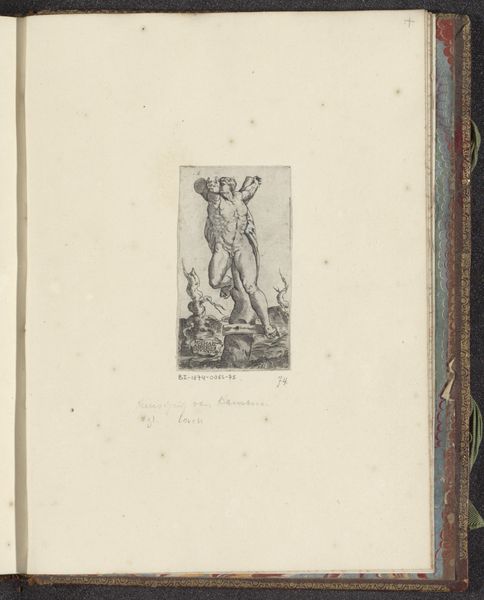
drawing, intaglio, pen, engraving
#
portrait
#
drawing
#
aged paper
#
toned paper
#
baroque
#
intaglio
#
sketch book
#
classical-realism
#
figuration
#
personal sketchbook
#
pen-ink sketch
#
pen and pencil
#
pen work
#
sketchbook drawing
#
pen
#
history-painting
#
storyboard and sketchbook work
#
sketchbook art
#
engraving
Dimensions: height 222 mm, width 237 mm
Copyright: Rijks Museum: Open Domain
Curator: This intaglio print, "Bas-reliëf met een man met een schaal," was created by Reinier van Persijn between 1636 and 1647. What strikes you first about it? Editor: The quietness. It’s mostly muted tones rendered in pen and ink. The scene feels very still and intimate. It looks like aged paper from a sketchbook. Curator: Indeed. The visible chain lines and watermarks on the toned paper are remnants of its production, revealing it came from a mold-made sheet likely crafted from linen rags. This connects it to a specific artisan process and economic framework of paper production during that period. The toned paper also offers an immediacy you don't get from coated stocks. Editor: Looking closely, one notices a reclining man holding a shallow dish. Behind him are figures, architectural forms and livestock arranged around the man and what appear to be tables of food. The man almost appears to be reclining on the capital from a Doric column. What is going on here? It almost seems theatrical. Curator: The historical context suggests it represents a scene derived from classical antiquity, possibly alluding to themes of sacrifice or divine feasting. Van Persijn was a sought-after engraver of portraits, but in his etchings, the handwork of the artist comes into view much like that of a metal smith shaping, smoothing and chasing the copper plate used to transfer the drawing to paper. The social currency and visual style are all intertwined. Editor: The figure of the reclining man reads as decidedly gendered, coded in this moment with an image of idealized masculinity. Yet, consider that the figures arranged around the reclining man would all be reliant upon the man as a patron and source of sustenance and power. How interesting that the work uses pen and ink rather than oils to highlight issues of social standing during the period. Curator: Precisely. His labor, and the labor involved in creating the artwork itself, are intertwined, inviting us to consider the dynamics of artmaking in 17th century Holland and its social entanglements. Editor: It makes you question what it must have meant for an artist to put his hand to that level of labor given the politics of that period. This sketch book is just such a treasure. Curator: Absolutely, and exploring these details can reveal rich histories beyond just the visual experience.
Comments
No comments
Be the first to comment and join the conversation on the ultimate creative platform.


